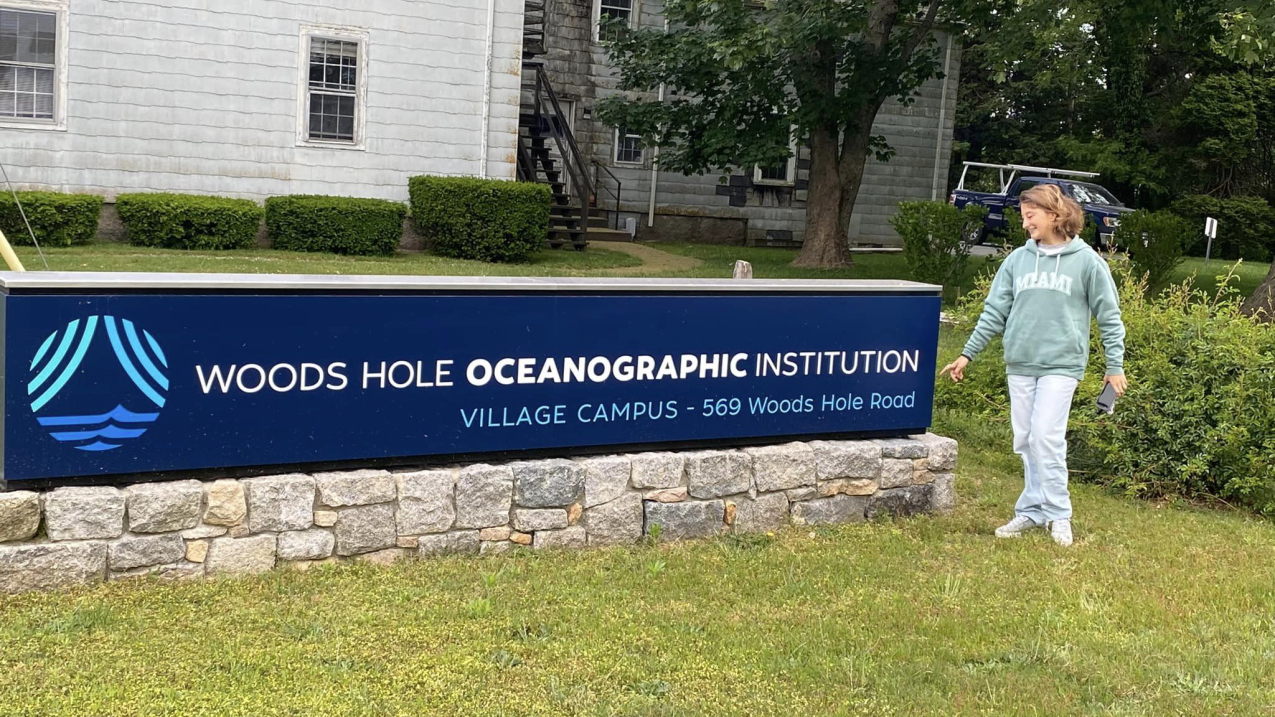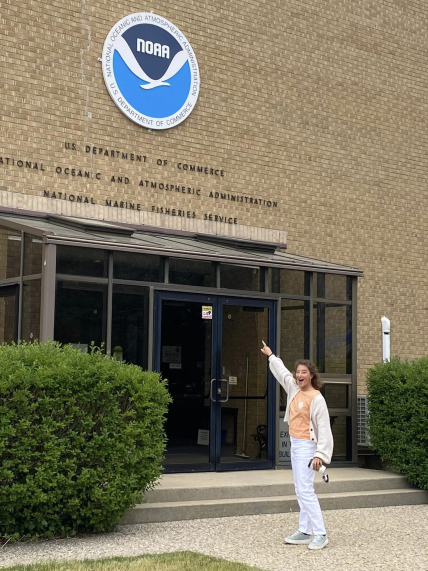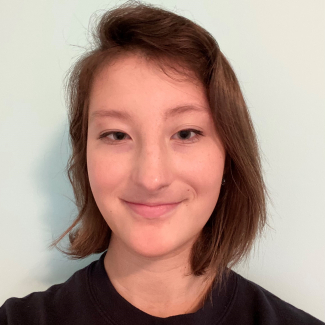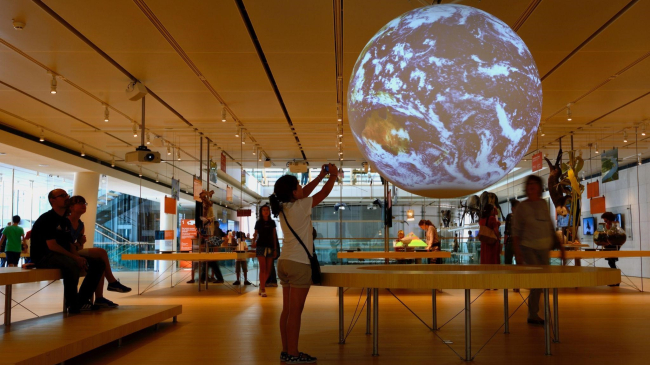Hi, My name is Allie Redford, I am a 2022 Hollings scholar, and this summer I studied sperm whale foraging activity using passive acoustics at the Northeast Fisheries Science Center in Woods Hole, Massachusetts.

Allie Redford, a 2022 Hollings scholar, outside the Northeast Fisheries Science Center office in Woods Hole, Massachusetts, where she completed her summer internship. (Image credit: Gabi Redford)
While diving thousands of meters deep to look for food, sperm whales produce sound waves that hit objects in the water and bounce back to them. The information carried by these waves can then help them localize prey and successfully hunt for squid and fish. I listened to and analyzed these sound waves, or echolocation calls, which were recorded using a towed string of underwater microphones.
They produce two main types of clicks while foraging, the first being “regular clicking” as they descend down to their maximum dive depths, which are broadly spaced and sound like this:
Audio file
And the second are more specialized, rapid “buzzes” that they produce when very close to a target prey, and sound like this:
Audio file
My goal was to locate as many buzzes as possible during these dive profiles, as they indicate instances of active foraging. We were able to find 12 buzzes, and more interestingly, we found buzzes at depths as shallow as 200 meters, and as deep as 1,300 meters under the ocean’s surface.
This project was the first time this towed microphone array method has been used to analyze sperm whale foraging activity, and it has been incredibly rewarding to be a part of such an innovative project.
Monitoring sperm whale foraging behavior is essential to help us better understand the role they play in their ecosystem, as well as how we can protect their population. The more we understand when and where sperm whales hunt for prey, the more we can learn about their necessary food sources and how to protect them through conservation efforts.
Throughout the summer I also learned many valuable skills I am excited to build on ... I had an incredible intern experience and couldn't be happier with the internship I chose!
Throughout the summer I also learned many valuable skills I am excited to build on, such as coding in R offsite link, mapping in ArcGIS offsite link, and using acoustic software. I’ve learned a lot about biological acoustics and its many applications, as it allows non-invasive monitoring and can collect data that is usually limited by range and dive duration. I had an incredible intern experience and couldn't be happier with the internship I chose!


Allie is a 2022 Hollings scholar majoring in marine sciences at the University of Miami.



